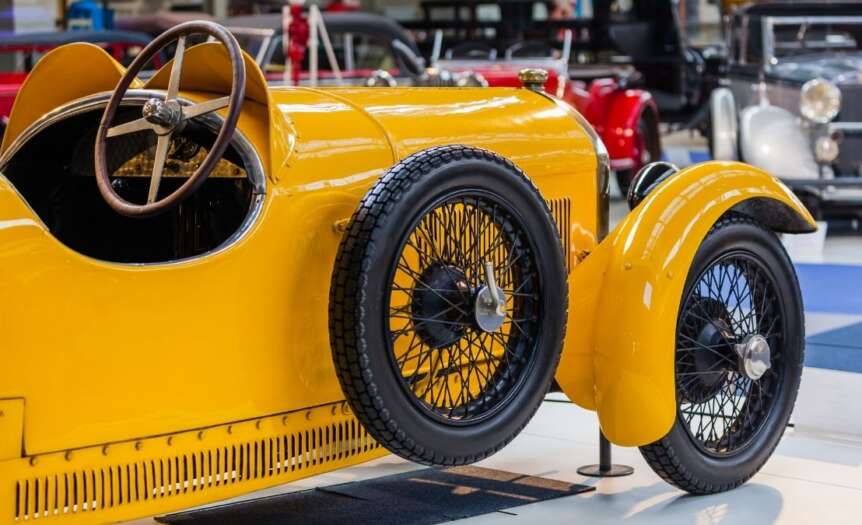Museums are great places to visit; we can learn about art, history—and even cars. Each car you put on display must be high quality and historically enriching. And vintage automobiles are no exception to this rule. Read about how car museums can maintain their vintage vehicles and learn a little more about how you can make sure your pieces are always display-ready.
Assess the Extent and Type of Cleaning Needed
Before you can maintain your vintage vehicles on the floor, you have to get them ready to be put on display. This process can entail many different things, but it’s mostly about evaluating the individual cleaning needs of each vehicle. People who are selling or loaning vintage cars will often leave curators with clear, specific instructions on how to care for them and keep them in the best condition possible. It’s essential to follow those instructions to the letter.
For instance, some owners prefer that curators only use safe, micro-fiber wash mitts and gentle soap to clean the car’s exterior. Others will suggest that nothing be done to their car to stay true to its genuine condition. Of course, once the vehicles are ready for display, their new home becomes the museum floor, where they’ll receive weekly detailing and upkeep according to their individual needs.
Evaluate Maintenance Accurately
Displaying vintage vehicles in your museum also requires you to understand the particular maintenance each of them needs. For instance, some cars are referred to as “short-term loans,” which means but the owner will come back for it after its been on display for a couple of months. When handling these types of loans, curators must take the time to top off fluids, make sure everything under the hood is in working order, and account for everything else regular car maintenance entails.
Some vehicles are “long-term loans.” These cars are usually on the display floor for indefinite periods; as such, curators remove their remaining fluids or chemicals. This helps maintain the vehicle’s current condition and ensures that it won’t wear or corrode from leftover chemicals or fluids sitting stagnant within the pipes.
Be Discerning About the Selections You Make
Not every car you’re offered is going to constitute a winner. It’s essential to know the distinctions between an excellent find and ones you should pass on, so you can ensure your display has top-quality vehicles people will pay to see.
For example, perhaps someone offers you a 1991 mint-condition Sedan for an excellent price. But there’s also an offer for a 1945 model pick-up truck in similar condition and a slightly higher price. In this case, the better selection would be the pick-up truck; it’s more than twice the age of the Sedan, it has more historical value, and it’s in excellent condition.
Remember that as a curator, your job is to choose pieces that have historical significance and beauty. So, it’s imperative to be very discerning about each one of your selections.
We hope our quick guide on how car museums can maintain their vintage vehicles provides new insight into how you can ensure your display cars are always top-tier and display-ready.














 Deering Estate
Deering Estate
 Massage Envy South Miami
Massage Envy South Miami
 Calla Blow Dry
Calla Blow Dry
 My Derma Clinic
My Derma Clinic
 Sushi Maki
Sushi Maki
 Sports Grill
Sports Grill
 The Healthy Kitchen
The Healthy Kitchen
 Golden Rule Seafood
Golden Rule Seafood
 Malanga Cuban Café
Malanga Cuban Café

 Kathleen Ballard
Kathleen Ballard
 Panter, Panter & Sampedro
Panter, Panter & Sampedro
 Vintage Liquors
Vintage Liquors
 The Dog from Ipanema
The Dog from Ipanema
 Rubinstein Family Chiropractic
Rubinstein Family Chiropractic
 Your Pet’s Best
Your Pet’s Best
 Indigo Republic
Indigo Republic




 ATR Luxury Homes
ATR Luxury Homes


 2112 Design Studio
2112 Design Studio
 Hamilton Fox & Company
Hamilton Fox & Company
 Creative Design Services
Creative Design Services
 Best Pest Professionals
Best Pest Professionals
 HD Tree Services
HD Tree Services
 Trinity Air Conditioning Company
Trinity Air Conditioning Company
 Cisca Construction & Development
Cisca Construction & Development
 Mosquito Joe
Mosquito Joe
 Cutler Bay Solar Solutions
Cutler Bay Solar Solutions


 Miami Royal Ballet & Dance
Miami Royal Ballet & Dance
 Christopher Columbus
Christopher Columbus
 Pineview Preschools
Pineview Preschools
 Westminster
Westminster
 Carrollton
Carrollton
 Lil’ Jungle
Lil’ Jungle
 Frost Science Museum
Frost Science Museum
 Palmer Trinity School
Palmer Trinity School
 South Florida Music
South Florida Music
 Pinecrest Orthodontics
Pinecrest Orthodontics
 Dr. Bob Pediatric Dentist
Dr. Bob Pediatric Dentist
 d.pediatrics
d.pediatrics
 South Miami Women’s Health
South Miami Women’s Health

 The Spot Barbershop
The Spot Barbershop
 My Derma Clinic
My Derma Clinic




 Miami Dance Project
Miami Dance Project

 Rubinstein Family Chiropractic
Rubinstein Family Chiropractic
 Indigo Republic
Indigo Republic

 Safes Universe
Safes Universe
 Vintage Liquors
Vintage Liquors
 Evenings Delight
Evenings Delight





 Atchana’s Homegrown Thai
Atchana’s Homegrown Thai
 Baptist Health South Florida
Baptist Health South Florida

 Laser Eye Center of Miami
Laser Eye Center of Miami
 Visiting Angels
Visiting Angels
 OpusCare of South Florida
OpusCare of South Florida

 Your Pet’s Best
Your Pet’s Best





 HD Tree Services
HD Tree Services
 Hamilton Fox & Company
Hamilton Fox & Company


 Creative Design Services
Creative Design Services